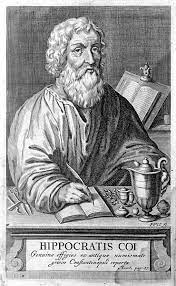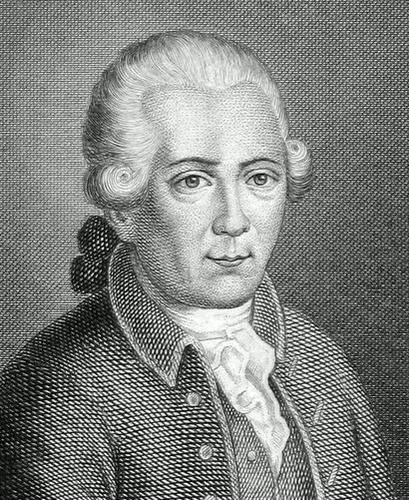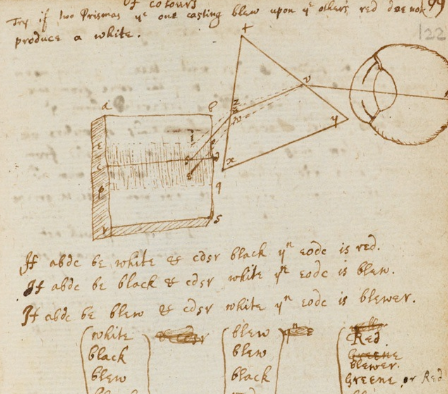A page from Newton’s Waste-books
2. It’s a question whether in the arts and science a best is possible beyond which our understanding cannot go. Perhaps this point is infinitely distant, notwithstanding that with every closer approximation we have less in front of us.
7. If we want to draw up a philosophy that will be useful for us in life, or if we want to draw up universal rules for a perpetually contented life, then, to be sure, we have to abstract from that which introduces too much diversity in our contemplations – somewhat as we often do in mathematics when we forget friction and other similar particular properties of bodies so that the calculation will not be too difficult for us, or at least to replace such properties with a single letter. Small misfortunes incontestable introduce a large measure of uncertainty into these practical rules, so that we have to dismiss them from our minds and turn our attention only to overcoming the greater misfortunes. This is incontestably the true meaning of certain propositions of the Stoic philosophy. (From Lichtenberg’s Waste-Books)
Ancient Wisdom in Aphorisms

- ‘Life is short, and Art long; the crisis fleeting; experience perilous, and decision difficult. The physician must not only be prepared to do what is right himself, but also to make the patient, the attendants, and externals cooperate’ (Hippocrates, Aphorisms [400 BCE])
- The word dates back in the ancient Greek language to aphorismos, deriving from the verb aphorizo, meaning to mark off, to divide, or to distinguish; from the 1520s, it arrives in English as the ‘concise statement of a principle’and is distinguished some other short forms by the 1580s.
- As both a physician and philosopher, Hippocrates emphasised the human virtues, ancient wisdom tempered by the principles of observation.
- ‘The first aphorism of Hippocrates, in its original form, has a harmonic composition, resembling a poem. Aphorisms are formed in the context of scientific, philosophic, and artistic works…. Hippocrates suggested that physicians develop their own philosophy. Aphoristic statements by Hippocrates convey accumulated wisdom, speculation, and maturity in medical practice’ (Antoniou et al.).
- Hippocrates’ Aphorisms were very popular in the ancient world. In a pre-print world, they provided a model of practice known by heart and easily memorised even by school children and were translated into Hebrew several times (and into Arabic) (see Bos).
- The aphorism became known as a concise and eloquent expression of a principle or truth to constitute a philosophical genre in the wisdom literature in the ancient world: Delphi maxims of the Oracle of Apollo at Delphi, the many different kinds of Sūtra in Sanskrit literature (c. 500–200 BC), Biblical Ecclesiastes, Islamic hadiths, Pythagoras’ Golden Verses, Hebraic and Yiddish sayings, and ancient aphorisms in Confucianism, Buddhist thought and Taoism.
- Ancient aphorisms are near-universal and are part of the philosophy of short forms, including sayings, proverbs, poems (haiku, tanku), remarks, adages, brocades, chiasmus, epigrams, epitaphs, maxims, aperçu, hypomnema, mantras, parables, and platitudes. The classical aphorism, often the sayings of sages, were collections that were therapeutic in nature to rid us of unnecessary suffering so that we could lead the good life (eudaimonia). Epictetus’ The Enchiridion (135 ACE), comprised of numbered paragraphs, begins: ‘1. Some things are in our control, and others, not. Things in our control are opinion, pursuit, desire, aversion, and, in a word, whatever are our own actions. Things not in our control are body, property, reputation, command, and, in a word, whatever are not our own ’
- The Golden Verses, a collection of moral precepts attributed to Pythagoras, appearing as early as the third century BCE, are 71 numbered statements, exhorting people ‘to worship the immortal gods,’ honour the ‘terrestrial daemons’ and one’s parents, make others distinguished by virtue your friend, avoid fault-finding, vanquish the passions of gluttony, sloth, sensuality, and anger, ‘do nothing evil’ ‘but above all respect yourself.’ Pythagoras’ teachings referenced the work of Anaximander, Anaximenes and Pherecydes, with its combination of mathematics and experimental method, and had a widespread influence on the Greek and Christian worlds.
- The ancient aphorisms in the Greek world were therapeutic, recording spiritual exercises that established philosophy as a way of life. Before Plato and the birth of institutional philosophy, the sayings of the pre-Socrates (Anaximander, Xenophanes, Parmenides, Heraclitus) were the basis of ‘philosophy,’ strongly attacked by Plato and Aristotle in the transition from oracular to argumentative philosophy.
- The Analects, meaning ‘selected sayings,’ is one of the most widely read and studied texts that continues to have a huge impact on East Asian culture and values. Written during the Warring States period (475–221 BCE), Confucius believed that people could develop an ethics of self-cultivation through ren or virtue (‘humaneness’ or how people should treat one another, and especially one’s parents): ‘Confucius said: In the home, the young should behave with filial piety, and out in the world, with brotherly love. They should be prudent and trustworthy. They should love all people and be close to the benevolent. Having done so, their remaining strength should be used to learn literature.’
- In A Theory of the Aphorism: From Confucius to Twitter, Andrew Hui argues that ‘aphorisms are before, against, and after philosophy,’ ‘at times, an ancestor, at times an ally, and at times an antagonist to systematic philosophy.’ An aphorism ‘requires interpretation,’ ‘the shortest of forms to read – takes the longest time to understand.’
- As John Gross demonstrates in his anthology, The Oxford Book of Aphorisms, an aphorism ‘can illuminate the hidden truth, or lay bare the ironies of existence,’ including the individual and the sense of identity – desires & longings, fears, hopes, passions, self-knowledge, self-love and self-doubt.
- In Signposts to Elsewhere: A Book of Aphorisms, Yahia Lababidi writes: ‘There is a Persian proverb that says: “Epigrams succeed where epics fail.”We seem to be living at a historical moment where the grand narratives – truth, morality, life of the spirit – seem to be failing to hold our attention or capture our imagination. I’m hoping the humble aphorism, deceptively slight as it is, can do its quiet magic by helping us to rethink the Big Questions: how we live, where we are heading, who we are becoming?’
- H. Auden and Louis Kronenberger write: ‘An aphorism … must convince every reader that it is either universally true or true of every member of the class to which it refers, irrespective of the reader’s convictions.’
- John Morley gave an address on ‘Aphorisms,’ an address delivered before the Edinburgh Philosophical Institution, November 11, 1887, in which he wrote: ‘The essence of aphorism is the compression of a mass of thought and observation into a single saying. It is the very opposite of dissertation and declamation; its distinction is not so much ingenuity as good sense brought to a point; it ought to be neither enigmatical nor flat, neither a truism on the one hand, nor a riddle on the other. These wise sayings, said Bacon, the author of some of the wisest of them, are not only for ornament, but for action and business, having a point or edge, whereby knots in business are pierced and discovered. And he applauds Cicero’s description of such sayings as salt pits – that you may extract salt out of them and sprinkle it where you will. They are the guiding oracles which man has found out for himself in that great business of ours, of learning how to be, to do, to do without, and to depart.’
Lichtenberg and The Waste-Books

- Collections of aphorisms were favoured and published by early modern authors: Erasmus’ (1500) Adagia (‘more haste, less speed,’ ‘the blind leading the blind,’ ‘A rolling stone gathers no moss’); Baltasar Gracián’s (1647) The Art of Worldly Wisdom that embraces the style of conceptualism, characterised by ellipsis, agudeza(wit) and the minimum of form; La Rochefoucauld’s Maxims; Pascal’s Pensées (‘Man is only a reed, the weakest in nature, but he is a thinking reed,’ no. 200); and many others.
- Georg Christoph Lichtenberg’s The Waste Books (Sudelbücher in German) was a collection of 1085 aphorisms organised into notebooks (from A to L, covering the years 1765–1799):
- ‘The body of this book consists of 1,085 aphorisms and other aphoristically brief writings selected from the notebooks Lichtenberg kept from his student days until the end of his life as a depository for his thoughts, observations and memoranda to himself. He called these volumes his Sudelbücher – a rendition of the English ‘waste books,’ a term employed in the English business house of the time to designate the ledgers in which transactions of all kinds were entered as they occurred before being transferred to the more orderly and neatly written account books… a single page can include aphorisms, scientific jottings and sketches, linguistic experiments, phrases that have struck the writer and appealed to him, quotations from books and magazines, notes for future work, dates to be remembered, titles of books to be purchased; what the Sudelbücher are not, however, are diaries – Lichtenberg also kept diaries, and the orderly descriptions of the day-to-day events of his life they contain bear no resemblance to the pages of the notebooks.’
- Francis Bacon, with his interest in the management of knowledge, adopted the mercantile model of waste-book and ledger in 1608, compared his notebooks to waste books (see Vine on manuscript culture).
- ‘Bacon intended his private notebook to function “like a merchant’s waste book, where to enter all manner of remembranciaof matter, service, business, study, touching myself, service, others, either sparsism [scattered] or in schedules, without any manner of restraint”’ (Harkness).
- ‘[F]or aphorisms, except they should be ridiculous, cannot be made but of the pith and heart of sciences; for discourse of illustration is cut off; recitals of examples are cut off; discourse of connexion and order is cut off; descriptions of practice are cut off. So there remaineth nothing to fill the aphorisms but some good quantity of observation: and therefore no man can suffice, nor in reason will attempt, to write aphorisms, but he that is sound and grounded’ (Francis Bacon [1605]).
- Isaac Newton received his Waste Book, as he termed it, from his stepfather (dated 1664), in which he worked out some mathematical and optical calculations inspired by Descartes and Wallis, and later the principles of his calculus:
- ‘Much of Newton’s important work on calculus is developed in this large notebook, which he began using in 1664 when he was away from Cambridge due to the plague. Newton inherited the book from his stepfather, Rev Barnabas Smith, who used it from about 1612 to record his own theological notes (see, for example, his notes on adultery, in Latin). Newton was not interested in his stepfather’s jottings: its value to him was the large number of blank pages, which he began filling with his mathematical and optical calculations. Although the bulk of his work in this manuscript dates from the mid-1660s, Newton continued to use it into the 1680s and possibly even the 1690s.’
- Lichtenberg was the first experimental physicist at the University of Göttingen from 1767 and was known to be a great teacher, although his work in mathematics and experimental science was of little consequence. Most of his literary output was for two journals of which he was editor.
- Lichtenberg’s aphorisms were also greatly admired by and inspired Nietzsche, Goethe, Schopenhauer, Heine, Karl Kraus and Wittgenstein, defining a philosophical genre and style of German letters that was emulated.
- J. Hollingdale, Lichtenberg’s translator, in the blurb for his book, indicates: ‘Lichtenberg’s Waste Books have been greatly admired by writers as very different as Tolstoy, Einstein, and Andre Breton, while Nietzsche and Wittgenstein acknowledged them as a significant inspiration for their own radical work in philosophy.’
- ‘The epigram and the ‘sentence’ or proverb are plainly related to the aphorism, the character of the Romans and their language is equally plainly favourable to aphoristic brevity, and all good writers have tended towards aphorism when they have wanted to summarise an opinion: nonetheless, the aphorism as a deliberately cultivated literary form, as distinct from something said briefly, did not appear in European literature until the Renaissance, when the aphoristic writings of Erasmus, Michelangelo, Paracelsus and Bacon, but above all those of the line of French philosophers from Montaigne to Chamfort, bestowed on it the distinctive character by which we now recognise it.’
Lichtenberg and Wittgenstein

- Georg Henrik von Wright writes: ‘By far the most valuable part of Lichtenberg’s literary work, however, consisted of his “aphorisms,” or scattered thoughts on psychological, philosophical, scientific, and many other topics. They were written down in notebooks but were never systematically arranged by the author.’ Perhaps his greatest contribution, apart from the impact of his aphorisms on German style, was his conception of philosophy and its impact on Wittgenstein, who, while taking inspiration from Lichtenberg, modified and developed the genre into numbered remarks, many of which could stand alone, but most of which were part and parcel of an implicitly organised overlapping set of family resemblances.
- ‘Our entire philosophy is a correction of linguistic usage,’ Lichtenberg is quoted as saying. Wright goes on to suggest, ‘Philosophy, then, is a critique of language’ and ‘The philosopher, then, speaks with the words of the common language about things that are beyond it. He is thus compelled to express himself, to a certain degree, in metaphors (Gleichnissen).’
- Wright remarks, finally: ‘It should be evident from the above that Lichtenberg anticipated the conception of philosophy that has been represented in the twentieth century by Ludwig Wittgenstein. Wittgenstein knew Lichtenberg’s work well and esteemed it highly. It is hardly possible, however, to speak of Lichtenberg as an influence on the philosophy of Wittgenstein,’ although Wright speaks of a ‘rare congeniality’ between them.
- Others have noted such similarities: ‘Lichtenberg’s influence on Wittgenstein’s work went deeper than mere content: the gnomic form of the Tractatusand Philosophical Investigations owes a great deal to the example of Lichtenberg’s aphorisms.’
- ‘A good expression is worth as much as a good thought because it is almost impossible to express oneself well without showing what is expressed in a good light.’ (Lichtenberg, cited in Elisabeth Van Dam’s ‘Wittgenstein Lights Lichtenberg’s Candle: Flashlights of Enlightenment in Wittgenstein’s Thought’).
- ‘I believe that my sentences are mostly descriptions of visual images that occur to me. Lichtenberg’s wit is the flame that can burn on a pure candle only’ (Wittgenstein in his diary).
- ‘It was during these early years at Gottingen that he began his lifelong habit … of keeping “a Book wherein I write everything, as it see it or as my thoughts suggest it to me”’ (Lichtenberg, cited in Cohen).
Wittgenstein’s Transformation of the Philosophy of Short Forms

- ‘I think I summed up my attitude to philosophy when I said: Philosophy ought really to be written only as poeticcomposition. It must, as it seems to me, be possible to gather from this how far my thinking belongs to the present, future or past. For I was thereby revealing myself as someone who cannot do what he would like to be able to do’ (Wittgenstein, Culture and Value).
- ‘Lying to oneself about oneself, deceiving yourself about the pretence in your own state of will, must have a harmful influence on [one’s] style; for the result will be that you cannot tell what is genuine in style and what is false . . . If I perform to myself, then it’s this that the style expresses. And then the style cannot be my own. If you are unwilling to know what you are, your writing is a form of deceit’ (Wittgenstein, cited in Monk).
- Wittgenstein wonders on occasions whether he brings to life ‘new movements of thought’ or whether he simply applies old ones; he puzzles over his ability to write prose and concludes that his ability has limits which are part of his nature: ‘In this game, I can only attain such and sucha degree of perfection, I can’t go beyond it’ (Wittgenstein, Culture and Value).
- ‘One’s style of writing may be unoriginal in form – like mine – and yet one’s words may be well chosen; or, on the other hand, one may have a style that’s original in form, one that is freshly grown from deep within oneself’ (Wittgenstein, Culture and Value).
- Wittgenstein believes that ‘the greatness of what a man writes depends on everything else he writes and does’ (CV, 65e). There is a close link between ethics and style, for the mark of great style is originality, and originality is a moral attribute. Speaking or expressing the truth is not a matter of cleverness: ‘No one canspeak the truth; if he has still not mastered himself…. The truth can be spoken only by someone who is already at home in it…’ (Wittgenstein, Culture and Value).
- Philosophy is not only a battle against the bewitchment of language, an investigation of the ordinary and familiar with the aim of ‘showing the fly the way out of the fly-bottle’ (Wittgenstein, Philosophical Investigations), it also necessarily involves work on the self (Wittgenstein, Culture and Value).
- ‘An aspect of Wittgenstein’s work that has attracted growing attention is its language. It would be surprising if he were not one day ranked among the classic writers of German prose. The literary merits of the Tractatushave not gone unnoticed. The language of the Investigations is equally remarkable. The style is simple and perspicuous, the construction of sentences firm and free, and the rhythm flows easily. The form is sometimes that of dialogue, with questions and replies; sometimes, as in the Tractatus, it condenses to aphorisms’ (von Wright).
- ‘The scope and character of Wittgenstein’s literary Nachlass, the so-called “Wittgenstein Papers,” fall into three main groups: (a) the manuscripts (78), consisting of two strata of writings ‘first drafts’ and ‘more finished versions’; (b) the typescripts (34) which were dictated or prepared by Wittgenstein himself; and (c) verbatim records of dictations (8) to colleagues or pupils. Wright mentions two further groups: the notes, more or less verbatim, of Wittgenstein’s conversations and lectures; and his correspondence. Already, one might note that there is something extraordinary about the amount he wrote, most of which was never published in his lifetime. He agonised over the form and composition of his work, and he developed very complex methods of composition. He comments in Culture and Value that when he is thinking about a topic, he ‘jump[s] about all round it’: ‘Forcing my thoughts into an ordered sequence is a torment for me …. I squander an unspeakable amount of effort making an arrangement of my thoughts which may have no value at all”’ (Peters & Burbules, citing Culture and Value).
- ‘An aphorism, properly stamped and moulded, has not been ‘deciphered’ when it has simply been read; rather, one has then to begin its exegesis, for which is required an art of exegesis’ (Nietzsche, On the Genealogy of Morals).
- ‘In his first book of aphorisms, Human, All Too Human: A Book for Free Spirits (1886), Nietzsche asks us to reflect on its Stückwerk quality – its status as piece-work, part-work, patchwork, piecemeal, or as often alleged in a somewhat pejorative manner against aphoristic texts – fragmentary’ (Doering):
- ‘Nietzsche indeed wanted to be remembered: as Zarathrustra claims, “Whoever writes in blood and aphorisms does not want to be read, but rather to be learned by heart.”’
- ‘The reason to consider Nietzsche and Wittgenstein together is that their formidably unique styles, rhetorics, and forms of expression – and most perhaps centrally, their Stückwerk, aphoristic approaches – have forced their concepts into a profoundly azeotropic relation to their texts.’
- What of the methods and interpretation of aphoristic philosophy?
- ‘In its pure and perfect form, the aphorism is distinguished by four qualities occurring together: it is brief, it is isolated, it is witty, and it is ‘philosophical’” (Hollingdale in Lichtenberg).
- ‘Lichtenberg’s fragmentary philosophy’ is only inconsequentially similar to that of Nietzsche’s and Wittgenstein’s. It is ‘misleading’ because ‘their thinking is only expressed in fragmentary form whereas Lichtenberg’s really is fragmentary’ – what Hollingdale calls ‘variegated inconsequentiality’ (Lichtenberg).
- Wittgenstein was clearly inspired by Lichtenberg, though, unlike Lichtenberg and Nietzsche, he experiments and develops a distinctive aphoristic form as numbered ‘remarks’ first in the saying-shown aphorism of the Tractatus, and then, in the pedagogical form of the Investigations, which he favours because it allows him to ‘proceed one from subject to another in a natural order and without breaks’ – based on ‘family resemblance of thoughts’ connected to the very nature of the investigation,’ as an art of assembling reminders with the aim of moving from obscurity to clarity. Wittgenstein’s aphoristic style is a move towards a perspicuous form informed by the notion that thoughts – fragmentary by nature – occur as flashes of inspiration. They must be harvested and recorded in notebooks. The recorded fragments, observations, and other stored items and then investigated for ‘family resemblances’ and are thematically linked together. For me, this resembles thought, as it happens or after a bout of reflection about an issue, that can be expressed clearly and concisely. Stylistics enter the choice of word and metaphor, and the resulting design is more a meandering stream across a flood plain than a river rushing to the sea. It simulates the physiology and neuroscience of thought.




